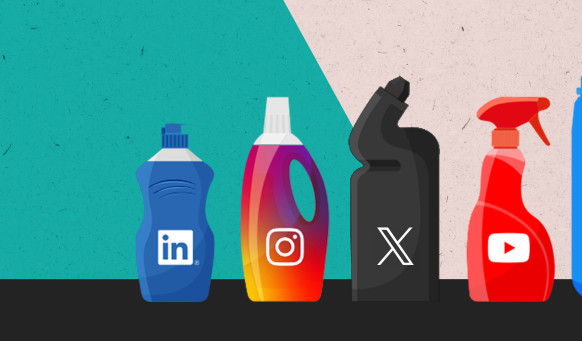Content Marketing
Why every business should think ‘Content, Content, Content’!
When it comes to the daunting task of moving house, most people will think ‘location, location, location’ at least once, thanks to the guidance of renowned TV personalities Kirsty Allsopp and Phil Spencer and their popular household mantra. Similarly, if your built environment business wants a successful marketing strategy, you should be thinking content, content, content!
However, with a staggering 67% of marketers {1} seeking additional resources to create great content, it can be challenging to convince decision-makers to invest in this crucial aspect. I sat down with construction marketing professional, David Ing to gauge his valuable insights on this topic.
Is there a clear understanding of content marketing?
At its core, content marketing is about initiating meaningful conversations and sharing your business’s stories through content that informs, engages and influences your target audience(s). However, if you adopt a basic approach to content marketing, you can limit its full potential. Effective content marketing requires more than just publishing content and hoping for the best. It requires numerous strategies which must revolve around ensuring your content reaches the right audience and inspires them to take action, not just consume it passively.
David summarises it well:
“Content marketing is all about getting information to the right people, on the right platform, at the right time. It is important to remember that no two people absorb information the same way and therefore look for it in different ways. For example, for light news items, I like to access it digitally because it is quick and easy. For the harder hitting, more in-depth content, I like having it in print. Therefore, thought must be given to how you are anticipating your audience will absorb your content. Not only this, but the channels themselves are also changing and LinkedIn is a prime example of this. A few years ago, LinkedIn was strictly business, and remained very corporate, however, since the pandemic, people and companies are publishing content with a lot more personality and of a more personal nature. To have an effective content marketing strategy, it is crucial to make sure your content is tailored to the platform you are using and that the content itself is communicating the correct message for your company.”
The three levels of content
At Fabrick, we see three levels of content. It is important to know which one you should be hitting, and why:
- Inform - this content type tells people about your business and what you have achieved, but does not elicit a direct response. For example, company news releases or case studies.
- Engage - this content type aims to create some two-way communication and generate a more involved audience. For example, blogs and features where personal and company opinions can be offered.
- Influence: This is when you start influencing your audience and causing direct action as a result of your content. For example, industry roundtables and webinars.
If you are only producing informative content, you are simply presenting information to your audience without eliciting a valuable response. While engaging with your audience should be a minimum requirement, the most effective content marketing strategies focus on influencing your audience.
Valuable advice
So how can construction businesses better inform, engage and influence? David’s advice is:
“Content marketing comes down to effective storytelling, and this is especially necessary for the built environment because it can be an habitual, traditional industry that can often be siloed. For that reason, it can prove difficult to convince your audience. For example, for manufacturers it can be difficult to convince architects to specify their product over one that they always choose because they know it has worked in the past. This creates the need to educate your audience on what your company is doing, and how your product or service is worth them making the change. This should be done through clear messaging that is carefully curated to fit the channel on which it’s being published”.
Key points
Here are some key points to remember:
- Be clear - It is important to remain agile but to maintain consistency in content marketing. It is essential to adopt a clear, forward-thinking approach. Always have a clear message and adopt long-term marketing strategies to ensure that you have sufficient material to sustain a regular posting schedule.
- Be personal - Brand storytelling that incorporates personal elements and focuses on people tends to be the most effective as it resonates with the audience and is relatable. Including granular details in personal stories can help solidify your message in people’s minds.
- Know your audience - While certain service fundamentals should be given, it’s crucial that your messaging conveys your unique personality and sets you apart from the competition. Create an identity that’s unmistakably yours to make a lasting impression.
Think content, content, content!
So, the next time you are thinking about your marketing strategies, just remember: content, content, content! With a strategic approach that reaches and inspires the right audience and content that is forward-thinking and personal, you will be able to create lasting impressions and achieve your marketing goals. Investing in good quality content should be a priority and by doing so, businesses can differentiate themselves from the competition and achieve success.
If you want a content marketing strategy that influences your audience, get in touch with our PR and marketing specialists today.
References:




